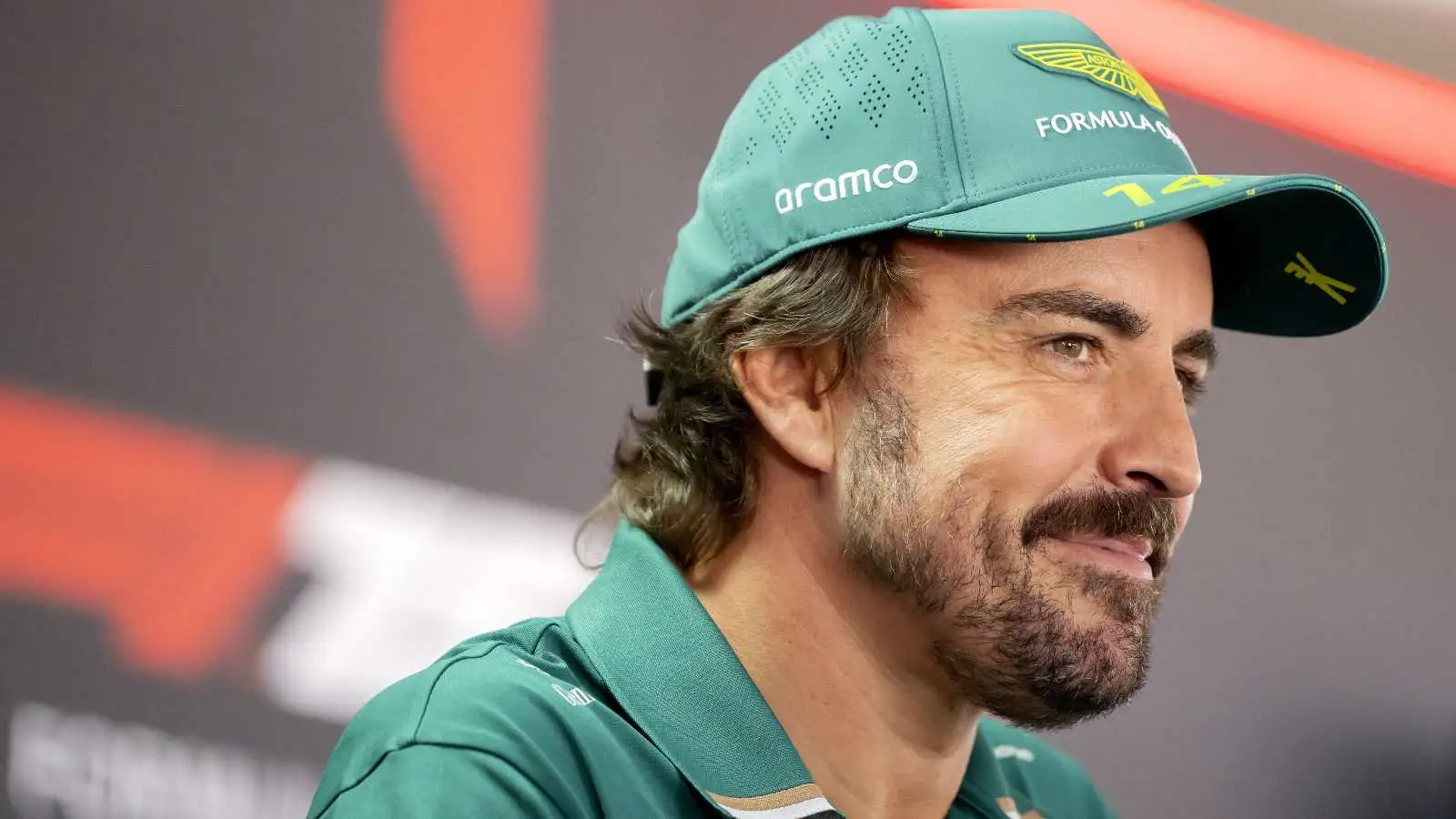Wet-weather conditions at the start of the 2025 Belgian Grand Prix saw Formula 1 race organizers delay the event for 80 minutes, at which point much of the water had dried.
While many fans and some drivers have criticized Formula 1 and the FIA for playing it too safe under wet conditions, it’s Aston Martin’s Fernando Alonso who has a solution for the problem: Better tarmac.
Fernando Alonso’s tarmac solution to the wet-weather problem
Additional reporting by Thomas Maher
A heavy rain shower at the start of the 2025 Belgian Grand Prix left drivers complaining about the lack of visibility during the event’s initial formation lap, with that issue ultimately leading to an 80-minute delay before the event got underway.
The field paced behind the safety car on intermediate tyres for five laps before proper green-flag conditions kicked off the start of the race, but by lap 12, drivers were pitting for slicks — making many fans and pundits wonder if the FIA and Formula 1 weren’t too cautious in delaying the event.
Many also wondered why a start on Pirelli’s wet tyres was not an option, but that again comes down to visibility.
The wet tyres are marvels of engineering that can displace 85 liters of water per second per tyre — but all that water ends up in the air in the form of spray, reducing visibility and making conditions more dangerous.
More on Formula 1 and wet racing:
👉 FIA facing ‘impossible job’ as drivers put in ‘awkward position’ over wet starts
👉 Martin Brundle demands internal FIA answers amid wet-weather F1 fear
But ahead of the 2025 Hungarian Grand Prix, Fernando Alonso told media, including PlanetF1.com, that he believes there’s a better way to go racing when the track is wet.
“I think the since 2017, with that set of regulations and the wide tyres, the visibility is worse,” Alonso began. “But it’s a really difficult topic.
“We all want to race, but if you are alone, you can’t race. If you are in a group of cars, you cannot see anything, and we had unfortunately too many bad examples, especially in Spa, with poor visibility and very big accidents.
“We all want to be brave. We all want to be racing, and spectators at home as well.
“But then when an accident happens, we remember — there is nothing really wrong to wait another half an hours, you know, this is is the way it is.”
If the wide tyres are causing issues, then perhaps reverting to a skinnier tread could do the trick. But Alonso actually argues that a different style of tarmac could dramatically transform wet-weather racing.
“Probably some of the asphalt in the circuits, they are a little bit different than what they’ve been in the past,” Alonso said. “Because we raced with a lot of water in Sepang [Malaysia], in different circuits, and it was always okay.
“And now this new generation of asphalt, which is very black and very grippy in dry conditions, is like a mirror in wet conditions. Visibility is not nice.
“But I don’t know what we can do there, or what the tyres can do in a very rough tarmac.
“And even some of the highways, I have said many times that the highways, there are some that they have zero spray. So if we implement that tarmac in all the circuits as a normal rule, we will have zero spray.
“Then it will be a huge degradation, probably, in dry conditions – I don’t know. But then we can work from that and have a starting point.
“But I’m just a driver.”
There are some significant barriers to the implementation of a rain-friendly tarmac at all the circuits on the Formula 1 calendar. Alonso points out the potential tyre degradation issues, which would certainly throw Pirelli for a loop.
But there are also major costs associated with repaving a race track. Many circuits would prefer to avoid a repave until absolutely necessary. And, further, there are no guarantees that a change in tarmac would completely reduce the massive amounts of spray from the wet-weather tyres.
Yet just because that kind of innovation is difficult does not mean it shouldn’t be done, argued Carlos Sainz ahead of the Hungarian Grand Prix.
“I always thought Formula 1 should, if possible, innovate and try something different,” he told media, including PlanetF1.com.
“I think there are certain kind of tarmacs that if you would put them on a straight line there would be no spray, and they exist, but circuits don’t have them. Most circuits don’t have it.”
Sainz also noted that “maybe we should have done a better job in communicating” why the FIA took a conservative approach to the delay — which certainly could have gone a long way in reducing the frustration associated with the delay.
Read next: Six title winners and one-win wonders to gain maiden glory at the Hungarian GP

